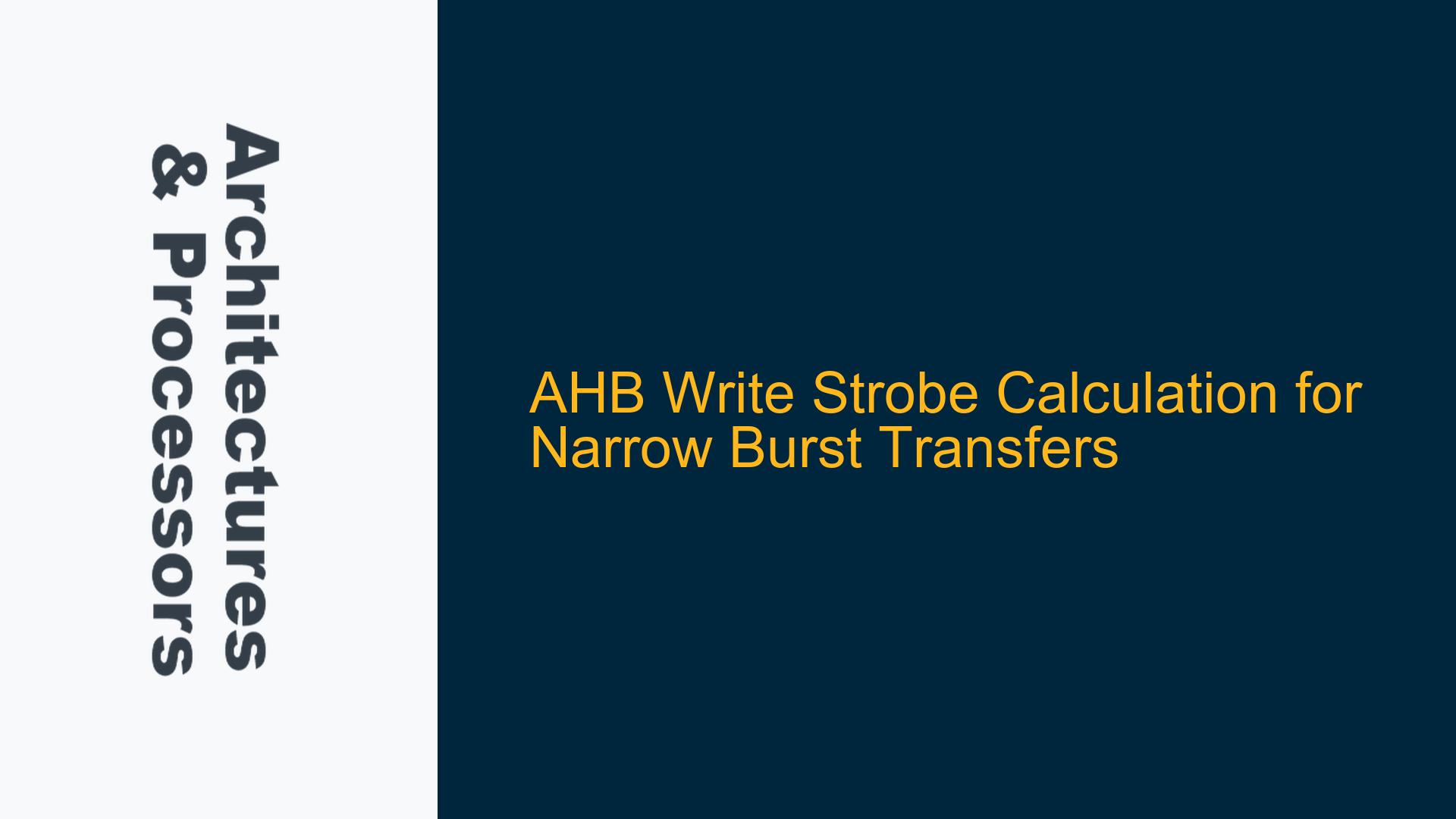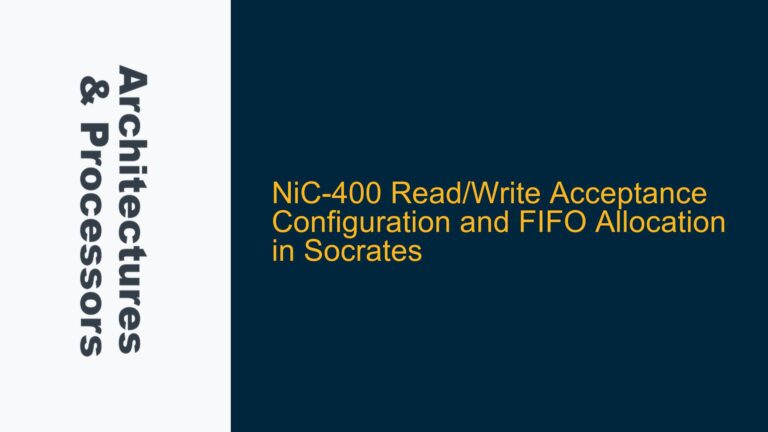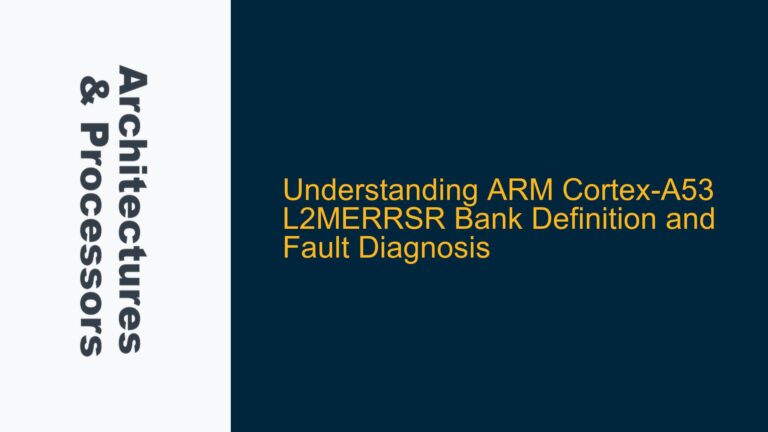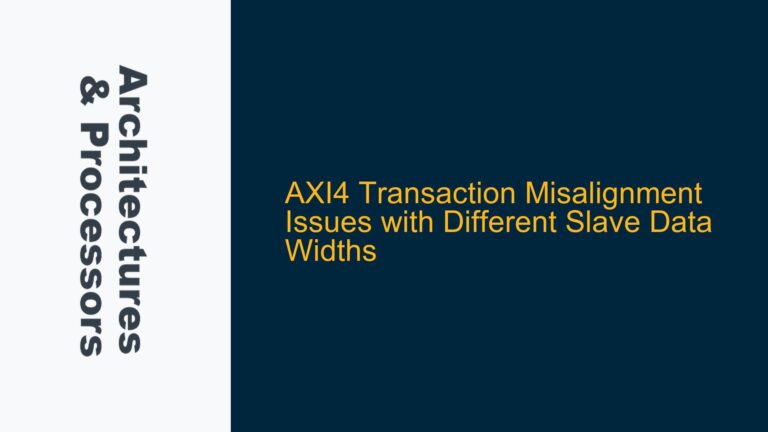AHB5 Narrow Burst Write Transfers and Strobe Calculation Challenges
The Advanced High-performance Bus (AHB) protocol, particularly AHB5, is widely used in ARM-based systems for high-speed data transfers between masters and slaves. One of the critical aspects of AHB5 is the generation and interpretation of write strobes (HWSTRB) during narrow burst transfers, where the transfer size (HSIZE) is smaller than the data width of the bus. This scenario introduces complexities in determining which byte lanes are active for each transfer in a burst, especially when dealing with wrap bursts and varying address offsets.
In a typical scenario, a 16-bit transfer (HSIZE=1) on a 32-bit bus requires careful calculation of the active byte lanes based on the address offset and transfer size. For example, a wrap16 burst starting at address 0x30 would sequence through addresses 0x30, 0x32, 0x34, and so on, wrapping back after reaching the boundary. The challenge lies in accurately generating the HWSTRB signals to indicate which byte lanes contain valid data for each transfer in the burst.
The AHB5 protocol specifies that the HWSTRB signals must align with the address offset (HADDR) and transfer size (HSIZE). However, unlike AXI, which provides explicit equations for calculating active byte lanes, AHB5 leaves this interpretation to the implementer. This ambiguity can lead to confusion, especially when transitioning from AXI to AHB5 or when dealing with systems that support both byte-invariant and word-invariant endianness.
Differences Between AHB5 and AXI Strobe Calculation and Endianness Implications
The primary difference between AHB5 and AXI lies in how they handle address and strobe calculations. AXI provides a start address for the entire burst and relies on incrementing this address for subsequent transfers. This approach simplifies the calculation of active byte lanes using equations that derive the lower and upper byte lanes based on the start address and transfer size. However, AHB5 provides a unique address for each transfer in the burst, which changes the way strobes are calculated.
In AHB5, the active byte lanes for each transfer are determined by the combination of HADDR, HSIZE, and HWSTRB. For example, in a 16-bit transfer on a 32-bit bus, HADDR[1] indicates which half of the data bus is active. If HADDR[1]=0, the lower 16 bits (HWDATA[15:0]) are active for a little-endian or byte-invariant big-endian system. Conversely, for a word-invariant big-endian system, HADDR[1]=0 would indicate the upper 16 bits (HWDATA[31:16]) are active.
Endianness further complicates the strobe calculation. AXI is byte-invariant, meaning the active byte lanes remain consistent regardless of endianness. However, AHB5 supports both byte-invariant and word-invariant implementations, which affects the mapping of active byte lanes. In a word-invariant big-endian system, the byte lanes are swapped compared to a little-endian system, requiring additional logic to handle the strobes correctly.
Another critical distinction is the handling of meaningless strobes. AXI strictly requires that only the strobes corresponding to valid byte lanes be asserted, while AHB5 allows the assertion of strobes outside the valid range. These meaningless strobes do not contain valid data and must be ignored by the slave. This flexibility in AHB5 can simplify the design of masters that do not use strobes, as they can tie HWSTRB to a constant value (e.g., 4’b1111) without affecting functionality.
Implementing Correct Strobe Calculation and Slave Validation Logic
To implement correct strobe calculation for AHB5 narrow burst transfers, the following steps should be taken:
-
Address and Size Analysis: For each transfer in the burst, analyze the HADDR and HSIZE signals to determine the potential active byte lanes. For a 16-bit transfer on a 32-bit bus, HADDR[1] indicates which half of the data bus is active. Use this information to generate the HWSTRB signals.
-
Endianness Handling: Account for the system’s endianness when calculating the active byte lanes. For a little-endian or byte-invariant big-endian system, HADDR[1]=0 corresponds to the lower 16 bits (HWDATA[15:0]). For a word-invariant big-endian system, HADDR[1]=0 corresponds to the upper 16 bits (HWDATA[31:16]).
-
Strobe Generation: Generate the HWSTRB signals based on the active byte lanes. For example, if HADDR[1]=0 and HSIZE=1, the strobe for a 16-bit transfer on a 32-bit bus would be 2’b11 for the lower 16 bits in a little-endian system or 2’b11 for the upper 16 bits in a word-invariant big-endian system.
-
Slave Validation Logic: Implement logic in the slave to validate the HWSTRB signals. The slave must ignore meaningless strobes and only process the byte lanes indicated by the combination of HADDR, HSIZE, and HWSTRB. For example, if the master asserts HWSTRB=4’b0111 for a 16-bit transfer at address 0x02, the slave should only process HWDATA[23:16].
-
Testing and Verification: Thoroughly test the strobe generation and validation logic using a variety of transfer sizes, addresses, and endianness configurations. Ensure that the system handles wrap bursts correctly and that the slave accurately processes valid data while ignoring meaningless strobes.
By following these steps, designers can ensure correct implementation of AHB5 narrow burst transfers and strobe calculation, avoiding common pitfalls related to address offset, transfer size, and endianness. This approach also ensures compatibility with both byte-invariant and word-invariant systems, providing robust and reliable data transfer functionality in ARM-based embedded systems.






